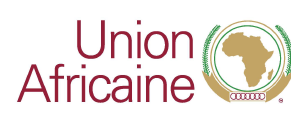Ressources
Agenda 2063 is Africa’s development blueprint to achieve inclusive and sustainable socio-economic development over a 50-year period.

L'UA offre des opportunités passionnantes pour s'impliquer dans la définition des politiques continentales et la mise en œuvre des programmes de développement qui ont un impact sur la vie des citoyens africains partout dans le monde. Pour en savoir plus, consultez les liens à droite.

Promouvoir la croissance et le développement économique de l'Afrique en se faisant le champion de l'inclusion des citoyens et du renforcement de la coopération et de l'intégration des États africains.

L'Agenda 2063 est le plan directeur et le plan directeur pour faire de l'Afrique la locomotive mondiale de l'avenir. C'est le cadre stratégique pour la réalisation de l'objectif de développement inclusif et durable de l'Afrique et une manifestation concrète de la volonté panafricaine d'unité, d'autodétermination, de liberté, de progrès et de prospérité collective poursuivie par le panafricanisme et la Renaissance africaine.

S.E. le Président William Samoei Ruto (PhD), Président de la République du Kenya et Champion de l'Union africaine pour la réforme institutionnelle. S.E. Ruto a été nommé lors de la 37ème Conférence des chefs d'État et de gouvernement en février 2024 pour promouvoir le processus de réforme institutionnelle de l'UA, succédant à S.E. Paul Kagame, Président de la République du Rwanda, qui a dirigé la mise en œuvre du processus de réforme depuis 2016.


L'UA offre des opportunités passionnantes pour s'impliquer dans la définition des politiques continentales et la mise en œuvre des programmes de développement qui ont un impact sur la vie des citoyens africains partout dans le monde. Pour en savoir plus, consultez les liens à droite.
There is a general consensus that science, technology and innovation are at the heart of development, and that investment in this sphere is critical to ensuring long-term growth. To this end, in 2014, African Heads of State and Government adopted the Science, Technology and Innovation Strategy for Africa 2014-2024, (STISA 2024), as a framework for S&T and innovation development in the Member States. From a measurement perspective, STISA (2024) calls for the monitoring and evaluation of policies which have been implemented and, for this to happen, surveys of R&D and of innovation in Member States are needed. The African Union recognises that for Member States to achieve Agenda 2063 and STISA (2024), science, technology and innovation must be at the centre of the developmental agenda. Hence these frameworks articulate the African Union Agenda for harnessing STI to boost economic growth and improve the lives of African people.
Agenda 2063 is Africa’s development blueprint to achieve inclusive and sustainable socio-economic development over a 50-year period.
